Northern Arizona University—now recognized as a model for sustainable reuse in college retail dining—didn’t always see success with reusables. Before making the transition to plastic-free reusables at their retail locations, the school first launched a circular takeout system using plastic containers and faced numerous challenges.
Most notably, the containers frequently broke, and students weren’t returning them. The plastic program wasn’t popular among students and created headaches for dining staff. In an entire academic year, the 28,000-student campus logged just 877 reusable container checkouts.

But after switching to the plastic-free USEFULL program and becoming the first school in Arizona to implement a mandatory reusable container system, the university is now a symbol of gold-standard campus sustainability.
In recognition of this achievement, the NAU campus dining program won the prestigious Arizona Forward sustainability award for their USEFULL program in March 2025. The NAU Office of Sustainability also recognized NAU Campus Dining and USEFULL with a 2024 Sustainability Leadership Award.
With more efficient operations powered by trackable stainless steel containers, the university is now expanding the program to seven additional dining locations.
So, how did NAU get here? Read on for the story of how plastic-free reuse took root at NAU.
The rise and fall of plastic reusables
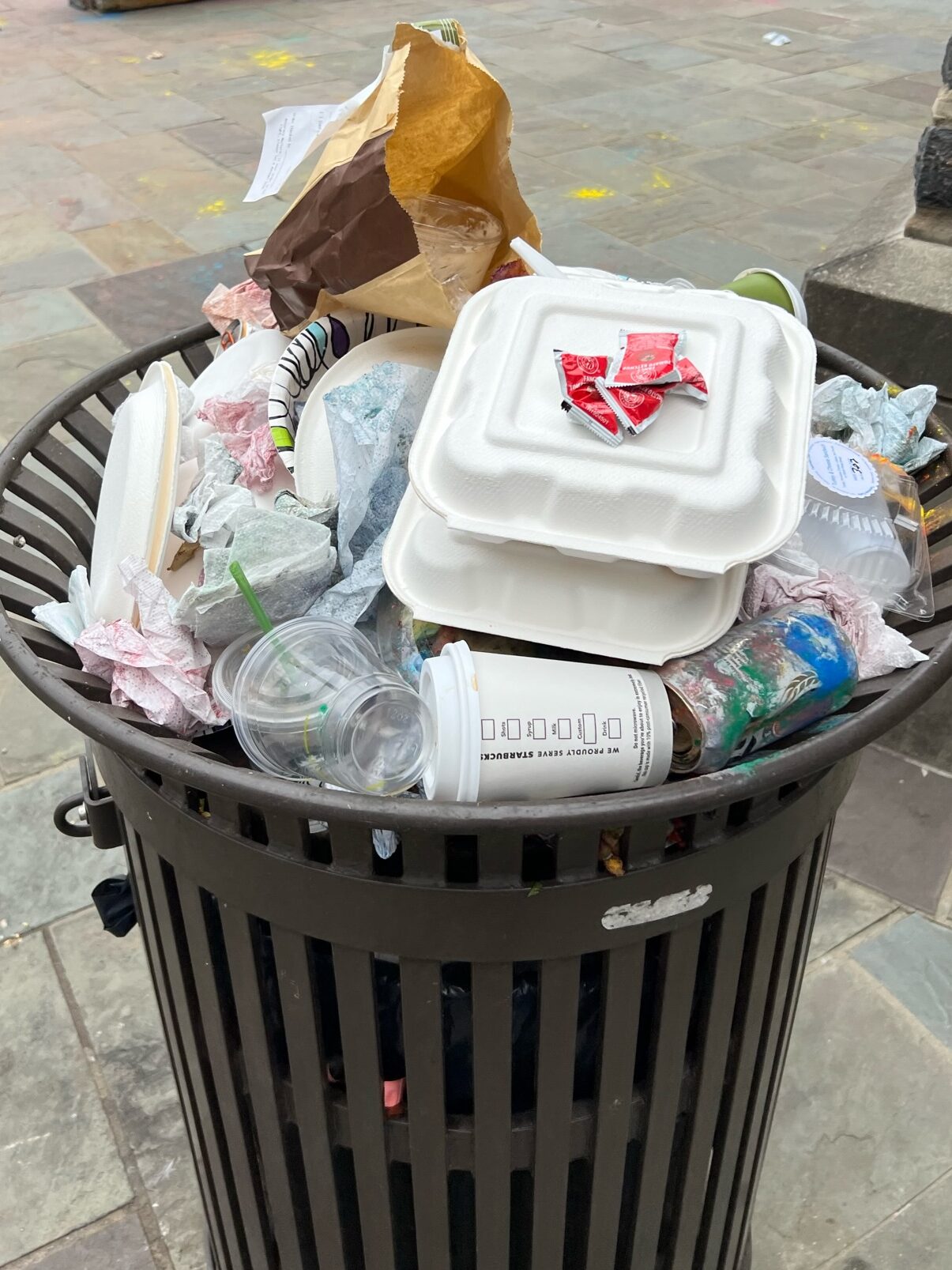
Like many universities, NAU has a student body with a deep passion for sustainable living. When the members of their student-run Green Fund evaluated campus retail dining operations, they saw that far too much waste was being created by the single-use takeout containers provided for takeaway meals.
In an attempt to fix this waste problem, they decided to fund the implementation of a third-party reusable takeout program. This new takeout option allowed students to choose a reusable takeout container—that they’d return back to the dining hall for washing—instead of a single-use one.
But there was a glaring problem. As Sodexo customer experience manager Erra Sankuer put it: “At the beginning it seemed fine, it was our first attempt at sustainable reuse. Though it quickly became clear that the container material wasn’t durable. They broke incredibly fast.”
The translucent plastic containers, which the Green Fund and Sodexo had been told would withstand dozens of reuses, turned out to be flimsy and short-lived. And not only were the containers fragile, the return process itself was flawed.
“The system involved trading in a coin for a reusable container. It was extremely elaborate, and adoption was low. Whenever we did see people using the [plastic] program, we would hardly ever see them return the container. And the containers that did get returned would end up breaking.“
Jacob Vanetsky
Sodexo Sustainability Specialist
The Green Fund students summed up the problem in their final impact analysis: “NAU’s student body, NAU Campus Dining employees, and the IT Department struggle with the current [plastic program] due to a one-for-one physical token system, isolated and faulty software technology, lack of training, and inconsistent inventory. While this system introduced reusable containers to NAU, it is outdated, inefficient, and there are now better solutions on the market.”
The hunt for a better reuse program
NAU needed a more durable, user-friendly system—one that aligned with the university’s, Sodexo’s, and the city of Flagstaff’s sustainability goals. The new solution had to ensure consistent returns, durability, and ease of use. It was imperative that containers continued circulating without ending up broken or missing.
With these priorities in mind, the Green Fund began researching alternatives. While a trackable plastic container system was considered, it ultimately didn’t meet all the criteria. The team’s analysis found that “the downsides [to the trackable plastic containers] are no help with employee training, still using plastic containers, and will end up costing more than USEFULL.”
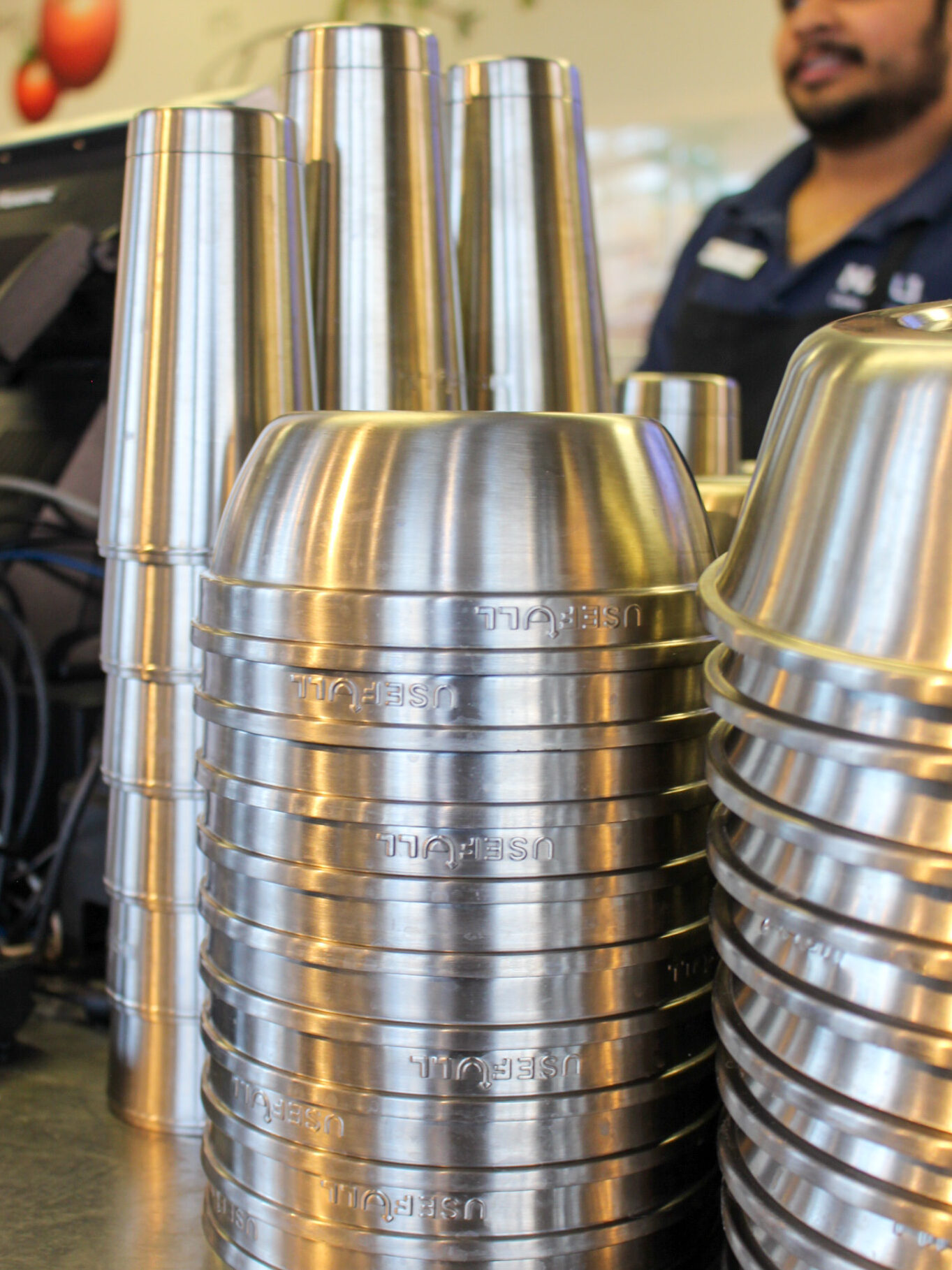
“In short, USEFULL provides updated and integrative technology, direct 24/7 customer service support, employee training, and relevant marketing, as well as uses recycled stainless steel and silicone in place of plastic.“
NAU Green Fund
After conducting an environmental and financial cost-benefit analysis, the Green Fund recommended bringing in USEFULL as NAU’s new reuse provider.
The Sodexo dining team quickly embraced the plan. The Green Fund would finance a one-year pilot of USEFULL, and Sodexo would evaluate the program based on first year results. Reuse was officially getting its much-needed makeover.
Offering reusables at retail locations
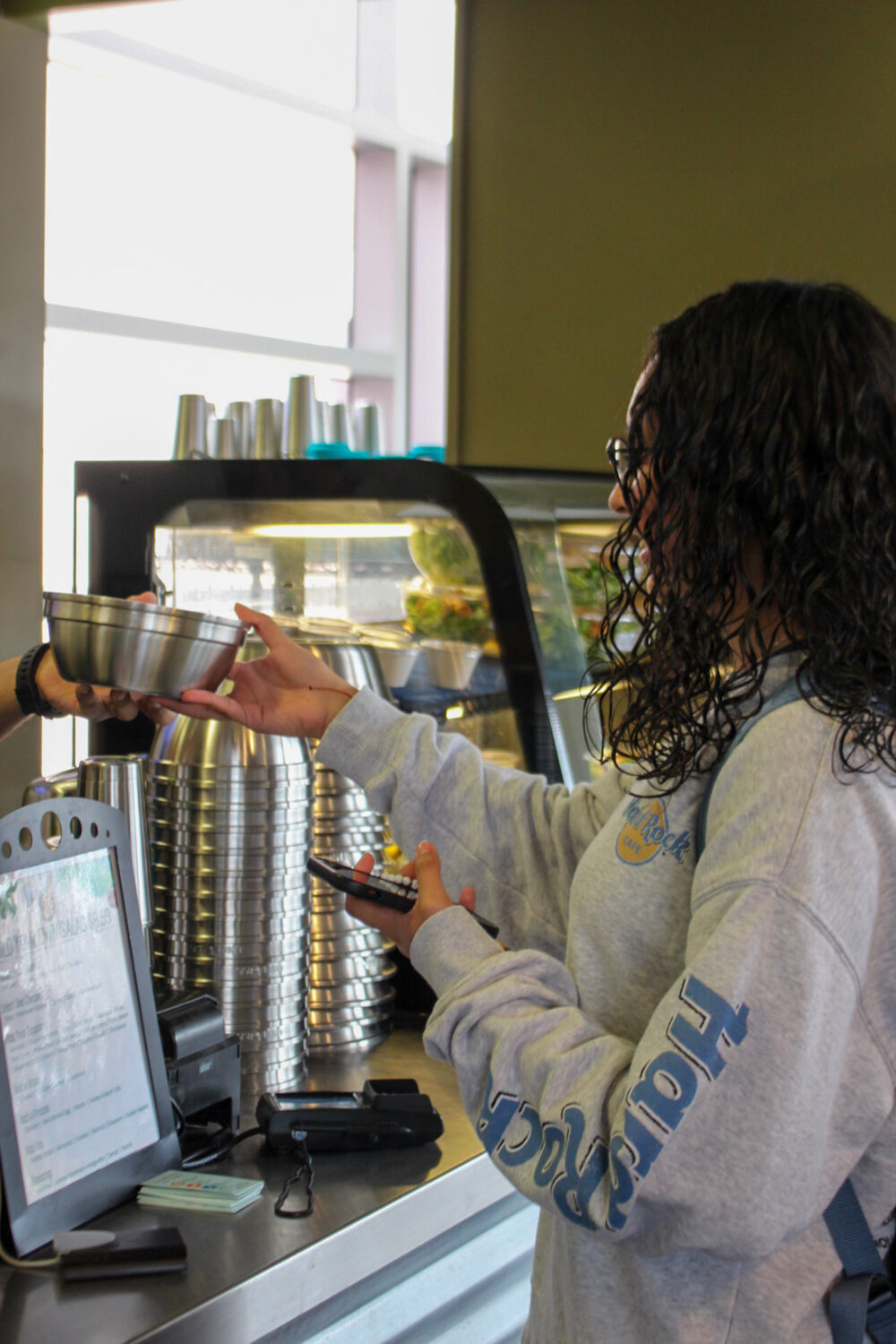
Because Northern Arizona University does not offer takeout at their residential dining locations, they sought to minimize takeout waste at their to-go based retail locations.
Strategically opting for student-favorite locations with lower barriers for new initiatives than their national chain locations, campus dining brought USEFULL into three of their self-branded retail locations at their campus hub: Lemon Grass Kitchen, Turnip the Greens, and Cobrizo Mexican Grill.
USEFULL containers became an instant staple in the campus hub. Anyone who wanted to eat at any of the three locations would walk away with their meal in a premium stainless steel container. For returns, students would just deposit the container in a return station bin nearby, with email and app reminders on their phone to keep them in the loop about when the item was due back.
A successful year of plastic-free reuse
To encourage adoption and maximize environmental impact, campus dining made USEFULL reusables a mandatory part of takeout at the three retail dining locations where the containers were offered. With the combination of durable containers, trackability, and an all-in mentality, the USEFULL program improved operational efficiency to hit sustainability targets with ease.
Within one month, NAU already had 3,362 users registered on the USEFULL app, and over 10,000 checkouts. Twelve months later, almost 10,000 users—33% of the student population—are registered for USEFULL, and over 140,000 stainless steel containers have been checked out. Overall, NAU has seen a container loss rate of only 0.26%, meaning they have continued to circulate 99.74% of their inventory since day one.
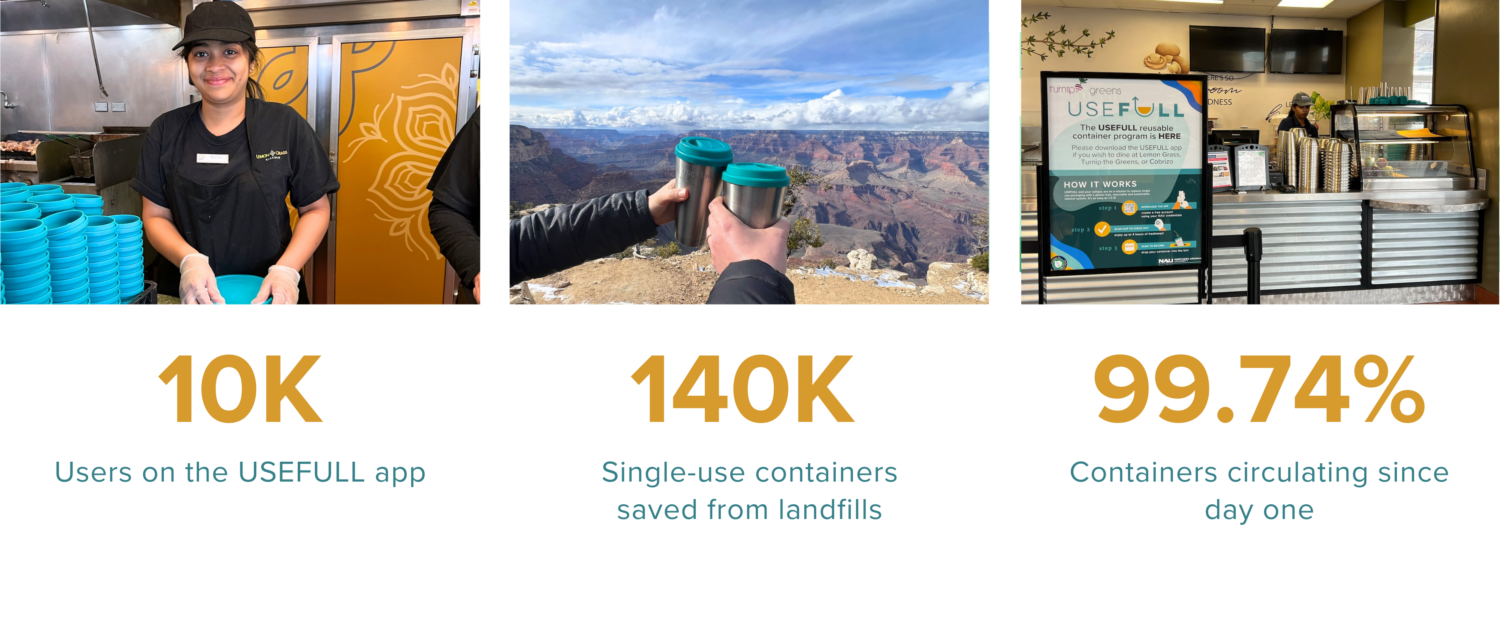
Expanding the USEFULL program
The Green Fund-backed trial of USEFULL on campus saw nearly 150,000 successful container checkouts. When it came time for Sodexo to fund a program renewal, the decision to continue with plastic-free reuse was obvious.
“The NAU community is completely on board [with USEFULL] from regular everyday students to the students at the Green Fund and our Office of Sustainability. It’s not just campus dining who wants reuse here.“
Erra Sankuer
Sodexo Customer Experience Manager
Their first year with USEFULL never felt like sink-or-swim. From launch to day-to-day operations, USEFULL worked in lockstep with NAU campus partners to customize the program to their campus needs. “I don’t know of too many programs and companies that would work with us in such a closely collaborative way,” said Jacob, sustainability specialist for Sodexo.
And even better, the program is cost-effective, saving Sodexo from the expense of repeatedly purchasing single-use containers.
“The cost savings were a big part of why we chose to renew. We started [with the Green Fund] from a place of—we have this system already that isn’t working. We need one that’s better for the environment, and if it also helps us save some money, that would be great. Then we found out that USEFULL does save us money, quite a bit of money actually. So it’s been helpful on two fronts,” Jacob added.
Where is NAU now?
Just one year after launch, Northern Arizona University is thriving with stainless steel reusables.

The dining team recently received an Arizona Forward Environmental Excellence Award in the circular economy category—an honor recognizing their success with the USEFULL program.
Sodexo is expanding USEFULL from three to ten total retail locations, including high traffic spots like Mountain Jack’s Burgers, Essential Blends smoothie shop, and Bean and Beaker Café.
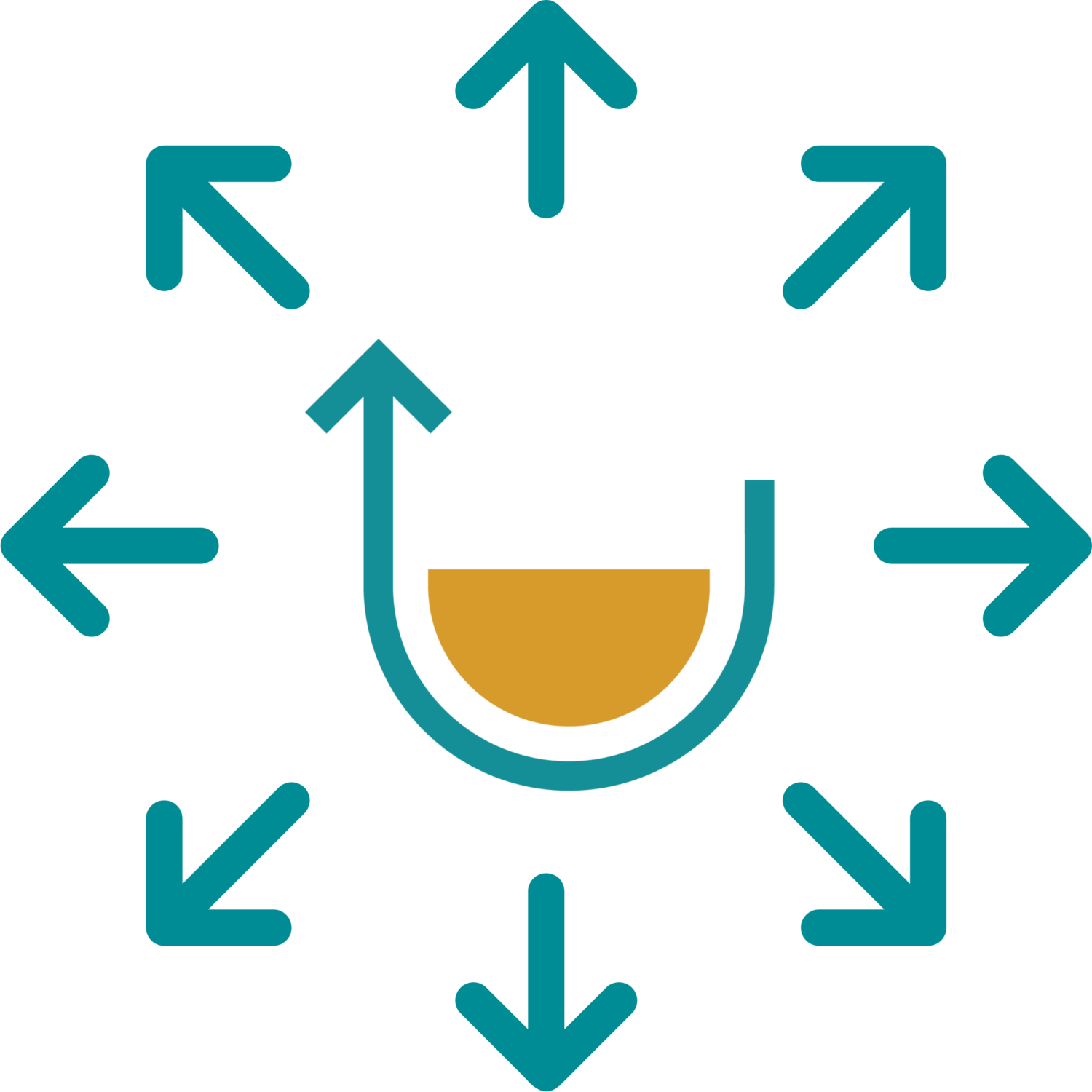
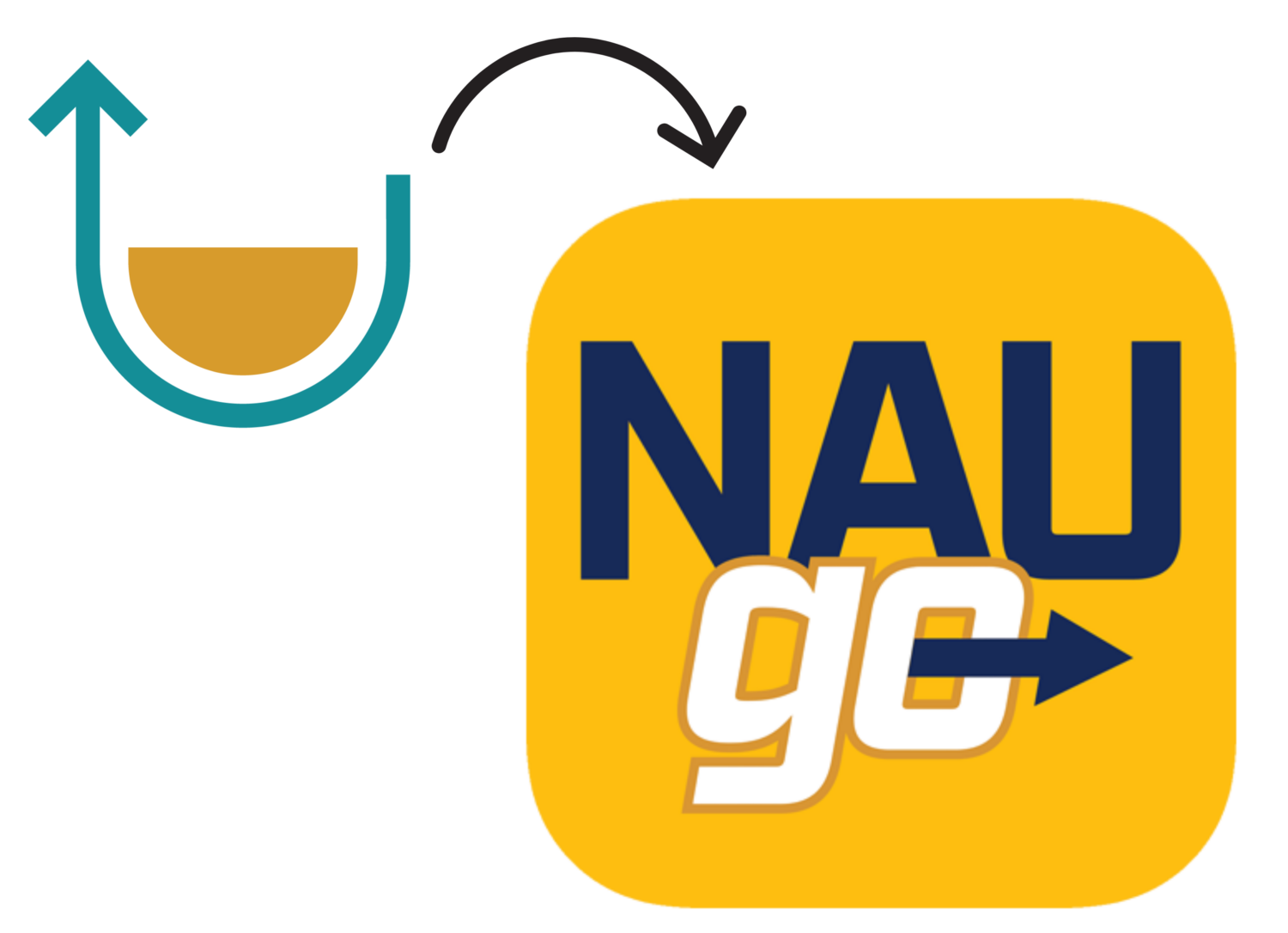
Meanwhile, USEFULL’s development team is integrating the program into NAU’s mobile app, and the product team is creating new container sizes based on NAU’s needs.
“USEFULL is working closely with our dining team to develop new types of reusable containers that make sense for our retail operations. The hands-on nature of our partnership is what makes the expansion of reuse and reduction of waste so attainable at NAU.”
Rose Wilson
Sodexo District Manager
For everyone from the dining team to NAU students, USEFULL reuse is now a welcome part of their regular routine. The program is convenient, keeps plastics away from student meals, and achieves one very simple goal: less trash.
Working for campus dining, Erra sees the impact of NAU’s zero-waste takeout in the campus hub every day. “Before, when we were on single-use containers, there was a constant changing of the trash bags. But with USEFULL, we no longer need someone to remove the trash as frequently, because there’s a lot less trash!”





